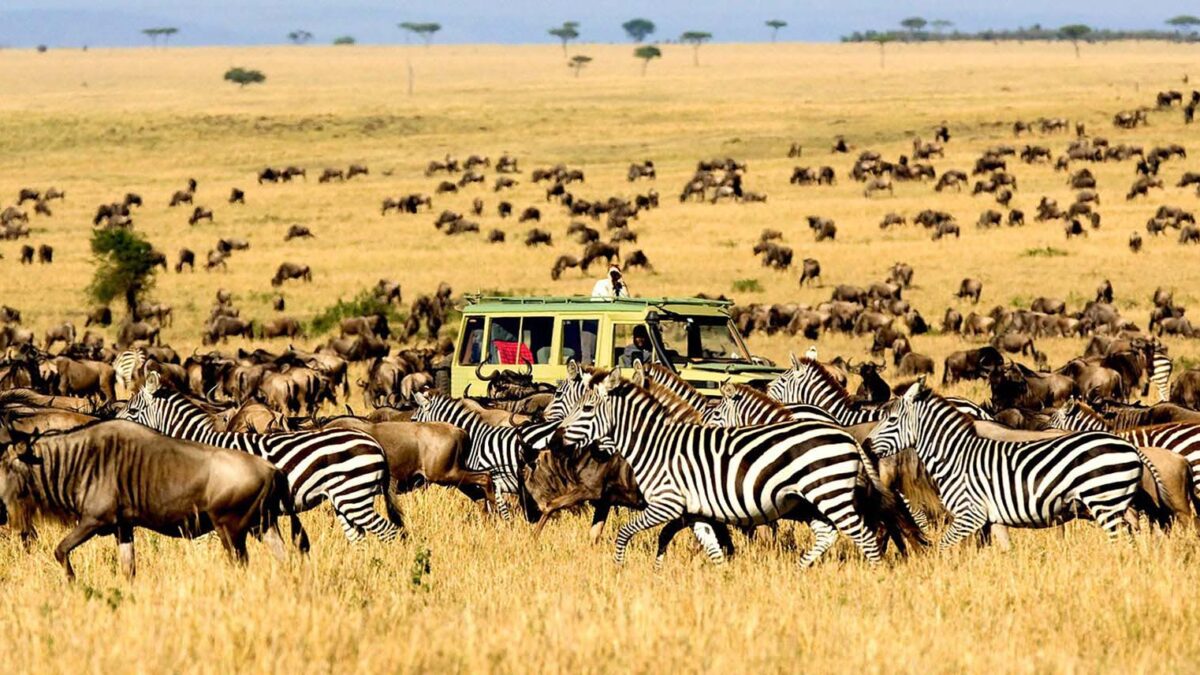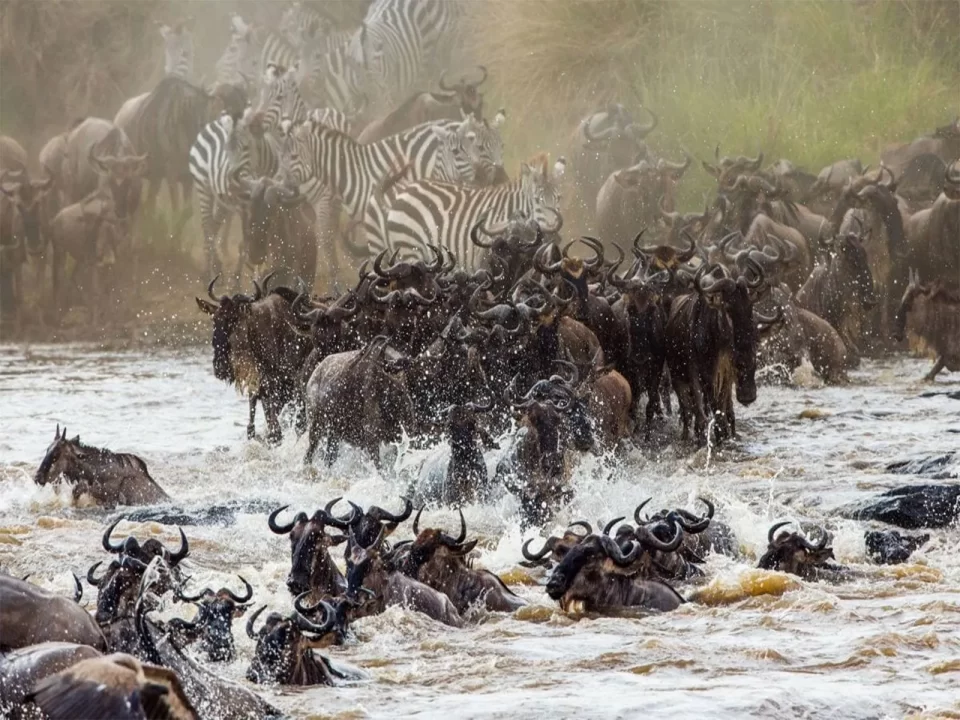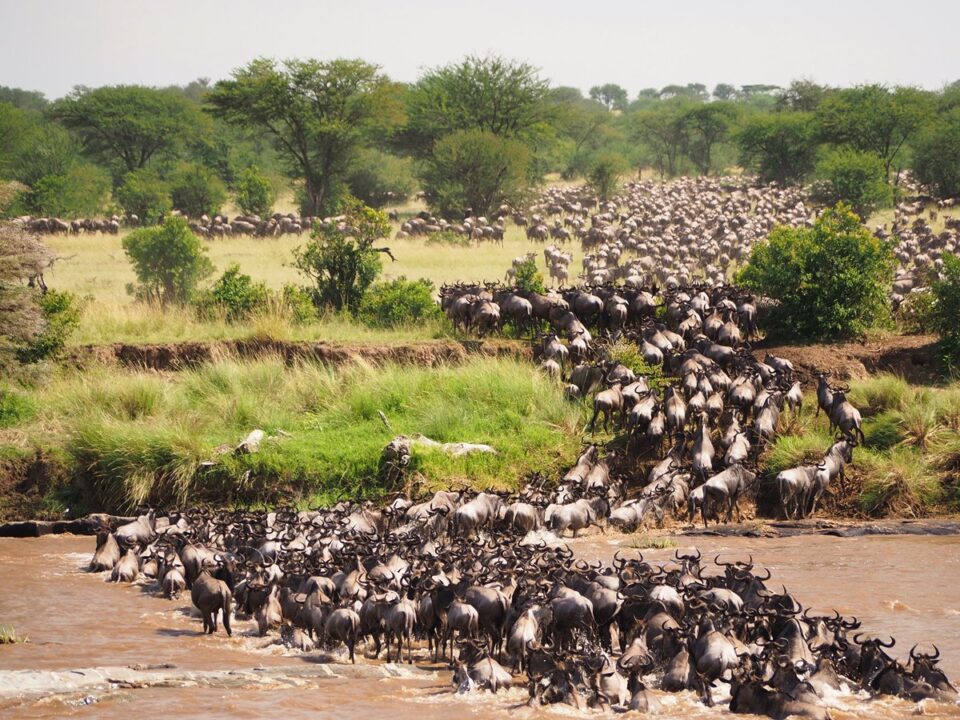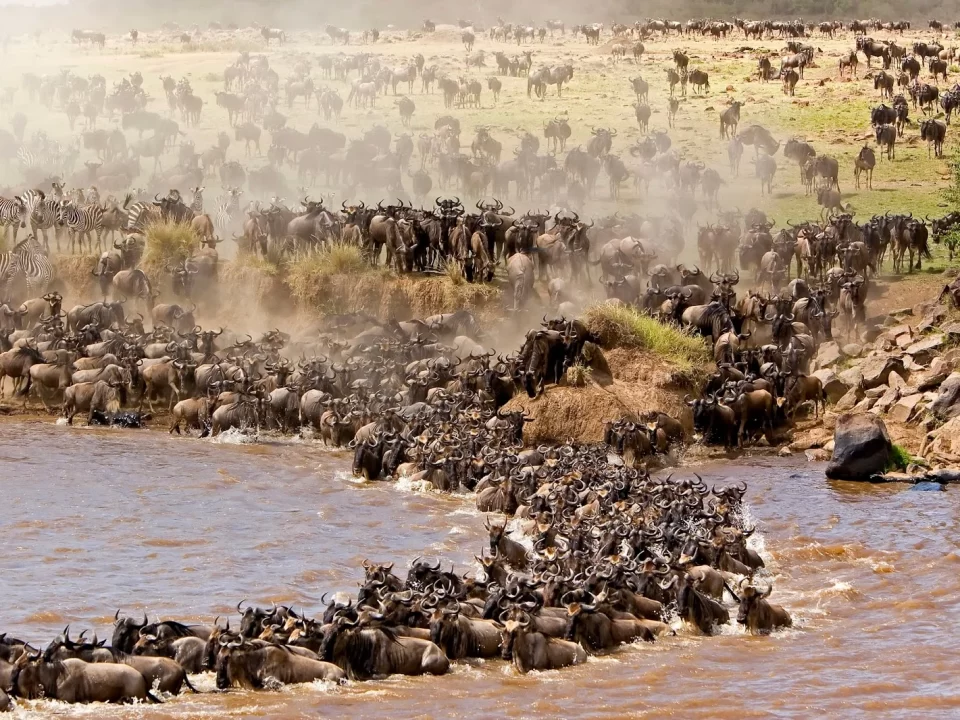Wildebeest Migration in East Africa

8-Day flying Wildebeest Migration Safari
January 15, 2024
Best Kenya Safari Holidays
January 15, 2024Witness the Spectacle of Wildebeest Migration in East Africa – Unveiling the Drama in Masai Mara, Kenya, and Serengeti, Tanzania
Embark on an extraordinary journey with the annual Wildebeest Migration, a breathtaking mass movement of wildlife between Tanzania’s Serengeti National Park and Kenya’s Masai Mara National Reserve. This awe-inspiring phenomenon is triggered by the availability of water and green grass, compelling the animals to cross the border barrier of the two East African countries.
The Mara River emerges as a formidable obstacle during this migration, home to one of the world’s largest ancient Nile crocodile populations. Prior to the grand procession of wildlife, predators strategically position themselves along the migration route, creating a dynamic spectacle. The great wildebeest migration stands as one of the most remarkable wildlife events on Earth.
Guided by the lead animal, the Wildebeest, the migration includes zebras, gazelles, and elands. Predators like lions, cheetahs, leopards, and hyenas actively trail the migration, making Serengeti National Park a prime location for observing predators during the wildebeest calving season between February and March. During this period, large herds gather in the Ndutu plains for calving, amidst the constant presence of predators.
When to Go to Experience the Great Wildebeest Migration in East Africa
While the great wildebeest migration is a year-round event, the river crossing spectacle happens at specific times:
- July-October: Mara River crossing
- November to January: Wildebeests move to Tanzania’s Serengeti for the calving season
- February to March: Calving season in the Ndutu area
- April-May: Wildebeest rutting season
- June-July: Grumeti River crossing
Where to Stay to Experience the Great Wildebeest Migration in East Africa
There are numerous camps in Serengeti National Park and Masai Mara National Reserve, but early booking is advised due to high demand. Recommended options include Ndutu Safari Lodge for a mid-range experience and Singita Mara Tented Camp for a luxurious stay.
Duration of Stay During the Great Wildebeest Migration:
Based on the expertise of our guides and traveler experiences, a minimum recommended stay is 7 nights in Serengeti and Masai Mara. Spend 4 nights in Serengeti and 3 nights in Masai Mara to enhance your chances of witnessing the river crossing spectacle.
Tips for Planning the Great Wildebeest Migration in East Africa:
Booking in Advance:
Given the popularity of the wildebeest migration, accommodations tend to fill up quickly. Booking at least a year in advance is recommended to secure your stay in action-packed areas.
Combine Masai Mara and Serengeti:
Combine visits to both Masai Mara and Serengeti during your migration safari for an increased likelihood of witnessing the thunderous hooves of wildebeests.
Travel between Mid-July and Mid-August or October:
River crossing typically occurs between July and October as wildebeests traverse from Serengeti to Masai Mara and vice versa in October.
Combine with Gorilla Trekking in Uganda or Rwanda:
Uganda and Rwanda offer ideal weather conditions for gorilla trekking between July and October. Seamless flights operate between Entebbe, Kigali, Kilimanjaro, and Nairobi.
Try Moving Mobile Camps:
For an authentic African experience, consider staying in mobile camps during the migration.
Try a Private Safari:
While group trips may be cost-effective, a private safari ensures a more intimate and flexible experience for wildlife viewing and photography.
Don’t Miss Zanzibar at the End:
Escape the heat and dust of Serengeti and Masai Mara with a romantic beach getaway to Zanzibar. Contact our Africa experts for a tailor-made safari followed by a Zanzibar beach holiday.
Take Full Day Game Drives:
Opt for full-day game drives with a packed picnic. Returning to the lodge late in the day increases your chances of wildlife encounters.
The Hot Air Balloon is a Must:
Soar over the vast herds of wildebeests with a hot air balloon safari, offering a unique and breathtaking perspective.
Cost Estimate for the Great Wildebeest Migration:
While a great wildebeest migration safari may involve a significant cost, competitive prices are offered to clients. The estimated cost ranges between 2500-3000 USD per person. Reach out to us for detailed safari prices tailored to your East African adventure.
Embark on this unforgettable journey with Trek Africa Expeditions to witness the drama of the wildebeest migration, an event that transcends the boundaries of East African countries, immersing you in the pulse of the wild. Contact us today for a safari experience that captures the essence of Africa’s natural wonders.




